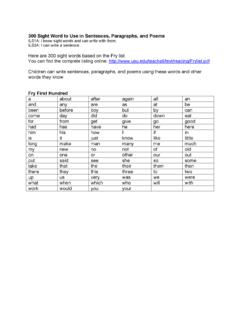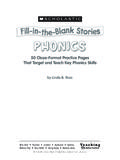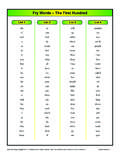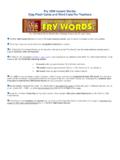Transcription of This is my sight word stories book - zoomreadingstrategy.com
1 This is my sight word stories book My name is _____ Today is _____ 2012 MaryMaisner Reading tutor and materials 303-886-9980 Table of Contents Tricky Phonics pyramid page: children have trouble putting these lessons into action as they read. This book will help you help your child with these easy-to-forget rules. Giraffe picture page: As you finish each page, put a star on the border surrounding the picture of the giraffe.
2 This lets your child see he is making progress. The look-alike word-sets around the edges of this page are difficult and important. Star each set as it is mastered. This book is based upon the Fry sight Word List. All sight word lists place the words in order of frequency found in print. The word the, is seen most often; thus, it is number one. Schools teach the words in this same order. In this book, the list has been broken into groups of 16 words to be practiced within stories . The more repetitions of each story, the more firmly anchored the words can become. Following each story, you will find Bingo games to practice word mastery and enrichment lessons; such as, clarity of direction for the confusing letters b and d, g, p and q.
3 These lessons are repeated several times throughout the book. The goal for your early reader is to become instant with the sight words ; sight words are so important. You decide how much extra your student is ready to try; you can return later to the enrichment lessons. The enrichment lessons are listed below to make them easy to revisit. If you want to locate a specific sight word, they are numbered and presented in order at the end of the book. Bb rule for distinguishing b from d .. page 10, 15, 21, 22, 73 Gg rule ..page 56,73 and Qq qu clarity of direction.
4 Page 79, 95 alphabet review for letter recognition, letter order, letter sound ..page16,34 *ce, ci, cy letter teams always say s: cent, city, cyclone .. page 40 homophones sound alike: two / to / too ..page 46 k is silent in the letter team kn: know, knew .. page 52,57,84,89 silent gh letter team: night, high, through .. pages 57,68,84,89 gh says f in the tiny group: laugh, enough, rough, tough .. page 84, 89, 103, 105 *ge, gi, gy usually say j: gentle, giant, gymnasium .. page 101 end of book checklist of mastery for the first 300 sight words ..page 110-113 *These are the lessons children forget; check your child frequently.
5 2012 Mary Maisner Use these steps on every page of this book; recap of the previous page: Focus attention: Use a large index card or sheet of paper to cover everything below the line of print you are reading together. Point to the target sight word set at the top of the page. Ask your student if he knows any of them. Ask your child to point to each of the target words as you read the set; let your child repeat each word. Tell each other sentences using the target sight words . Always start each sentence telling your student the target sight word, then ask your student to look through the sentence and put a dot under the target sight word and any other words he knows.
6 This is a powerful method proven to help your child place his speaking bank of words into his reading bank of words . This helps your child focus his mind on using the words he knows to understand the sentence, as well as helping him to decode words he uses in speech but does not yet hold in his reading word bank. This process is slow in the beginning but will quickly strengthen your student s grasp of the written word. After your student has looked through and dotted all words he knows, ask him to point to each word as you read the sentence. You read it several times, letting him read the words he can.
7 Work through two sentences a day, until your child is able to do more. Reread repeatedly. Slowly build your student s ability to stick with a lesson. Ask your student why there are colored letters. Answer: to help him see those letters; ing is stuck on the end of many words , like sleep sleeping and run running; letter d can be mistaken for letter b; th team melts together. Start: You say, This is a story about an animal that needs to be rescued from danger. What do we think the word rescue means? If the student has no idea, say: Let s read the story and find out.
8 This story: page 5-8 Target sight words 1- 4: the of and a Gray Mouse needs help 1) the A cat and a dog were sleeping in the sun. 2) of A mouse ran in front of them. 3) and The mouse had tiny ears and a long gray tail. 4) a A green snake was running after the mouse. Focus attention: Use a large index card or sheet of paper to cover everything below the line of print you are reading together.
9 Always start each sentence by showing your child the target word. The first target word here is to. Then, ask your student to look through the sentence and put a dot under the target word to, and any other words he knows. You read the sentence as your student points to each word, reading whatever words he can. Do this process repeatedly with each sentence. Help your child see the target words he has worked on in earlier sentences , like the, and, a, etc. Also, talk about what is happening in each sentence. Remind your student of what was happening in the story on the previous page.
10 Help your child see that reading a story is like listening to the story. Again, ask your student why there are colored letters. This story: p. 5-8 Target sight words 5- 8: to in is you Gray Mouse needs help Why does our mouse need help? 5) to The mouse was running to his house. 6) in The mouse wanted to be safe in his house. 7) is His house is not far away.









